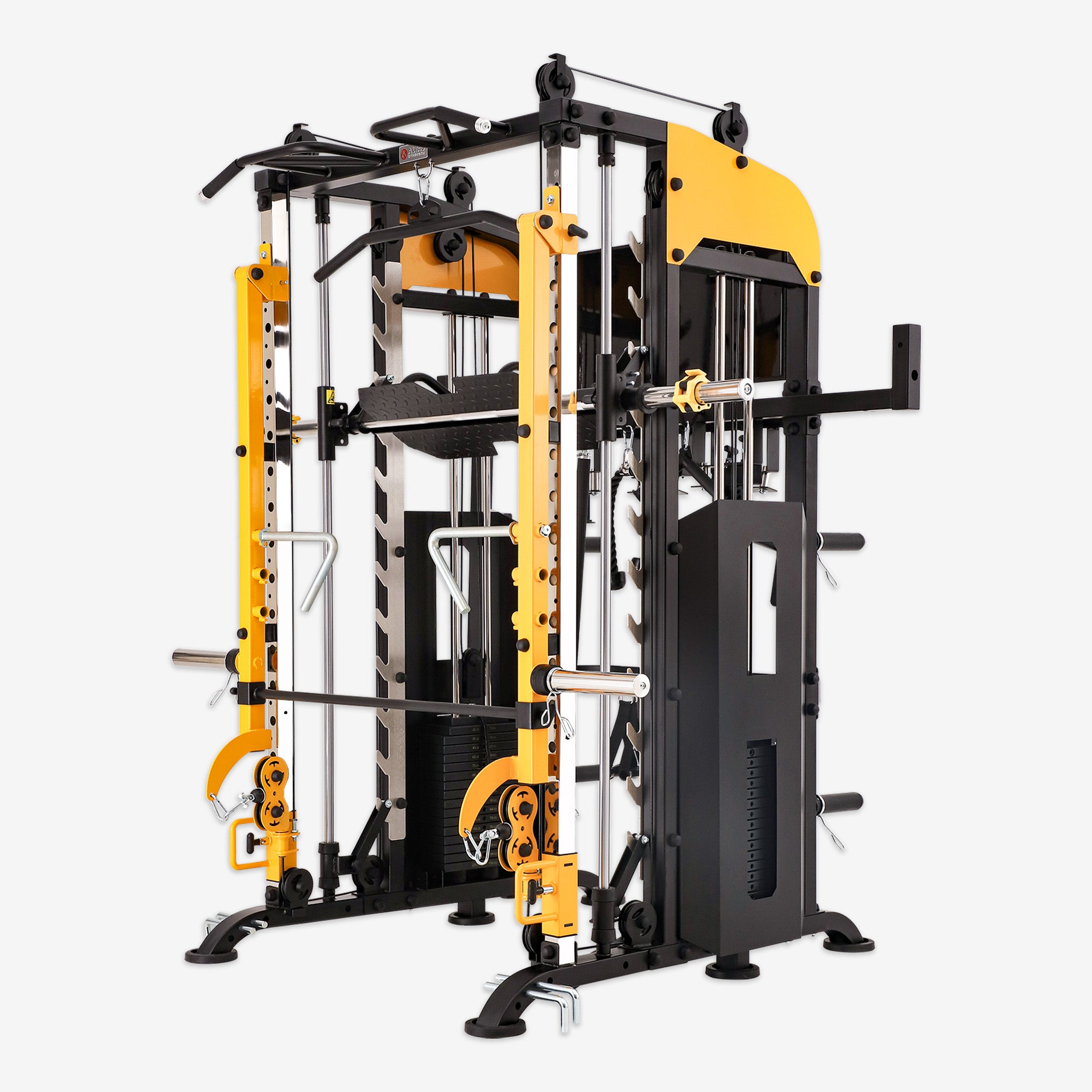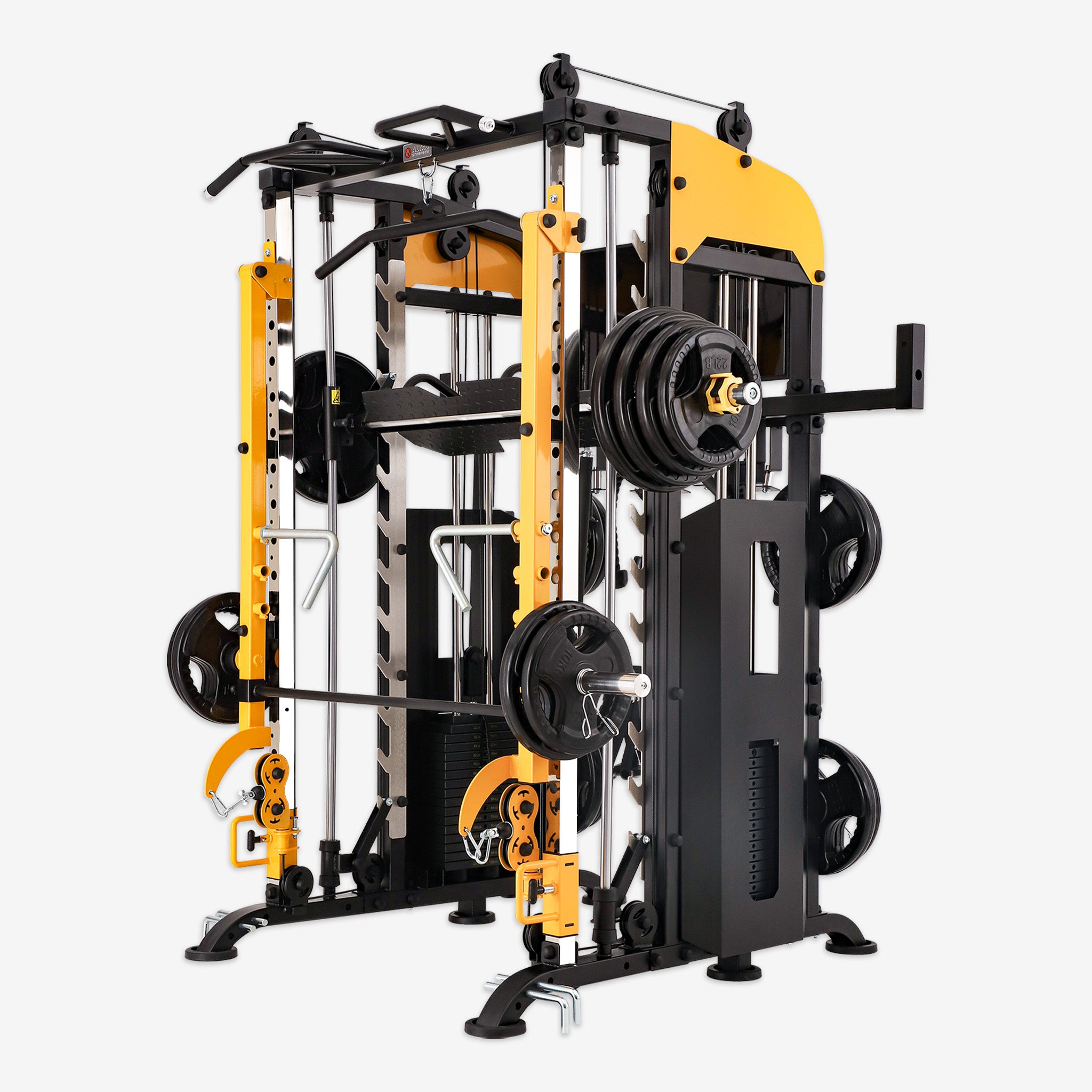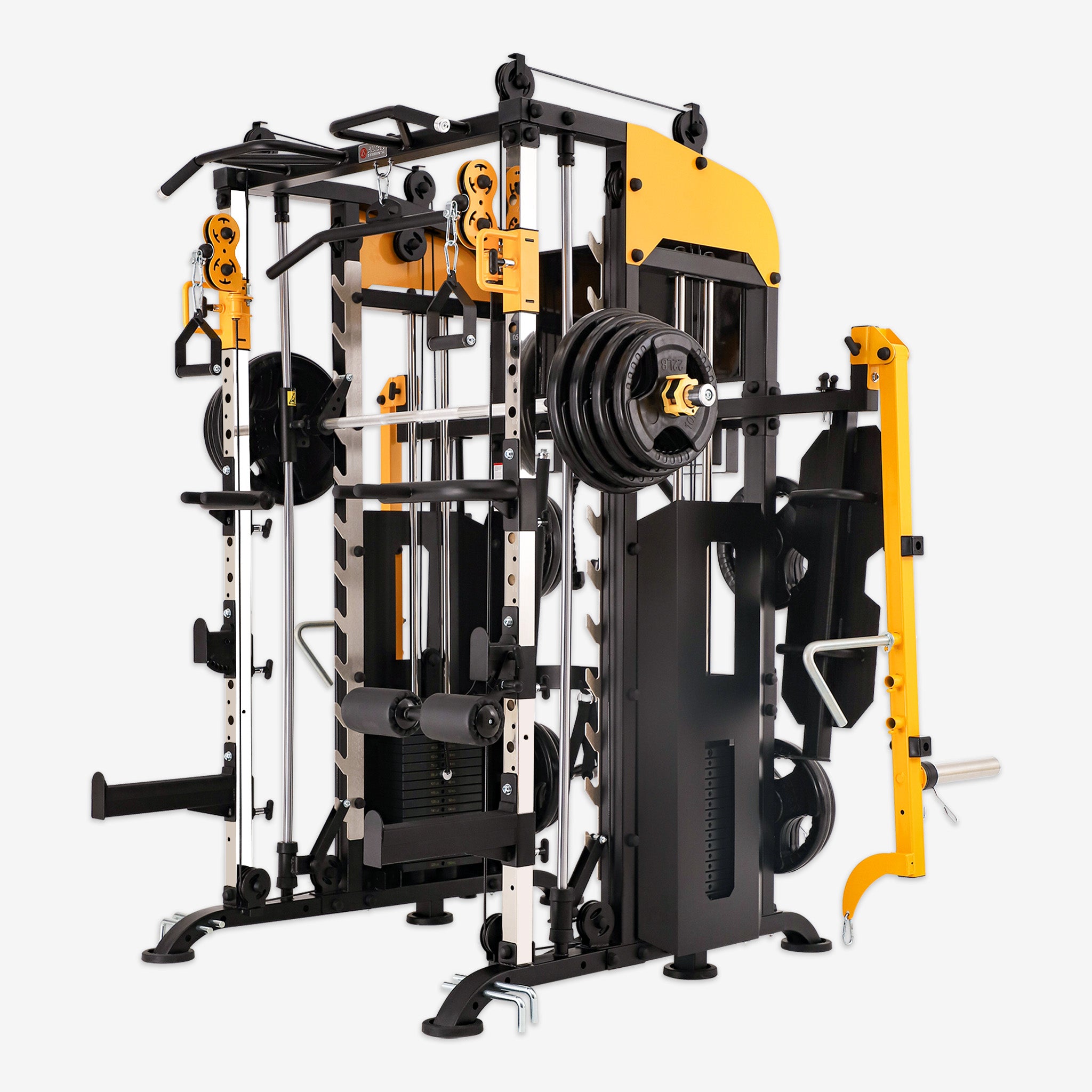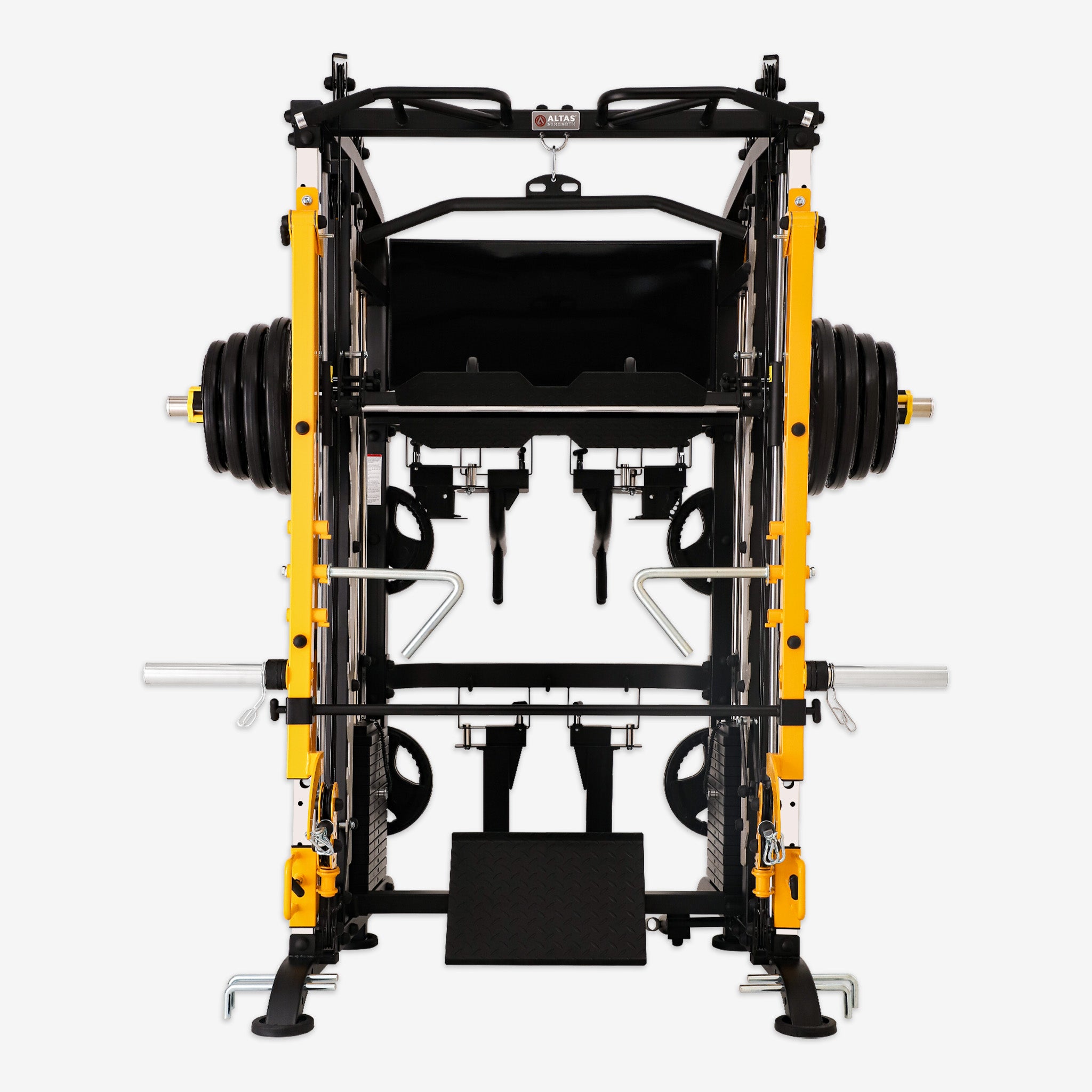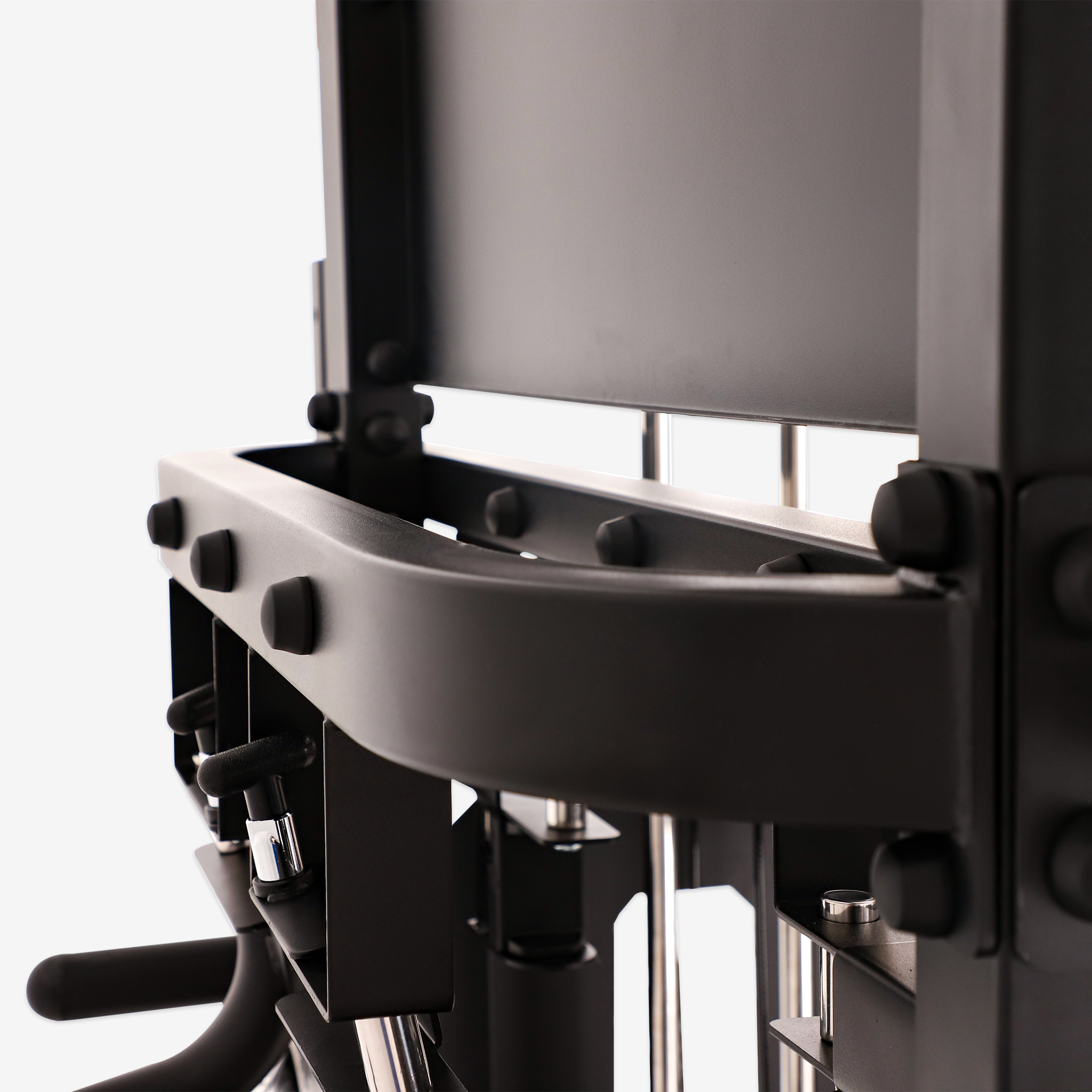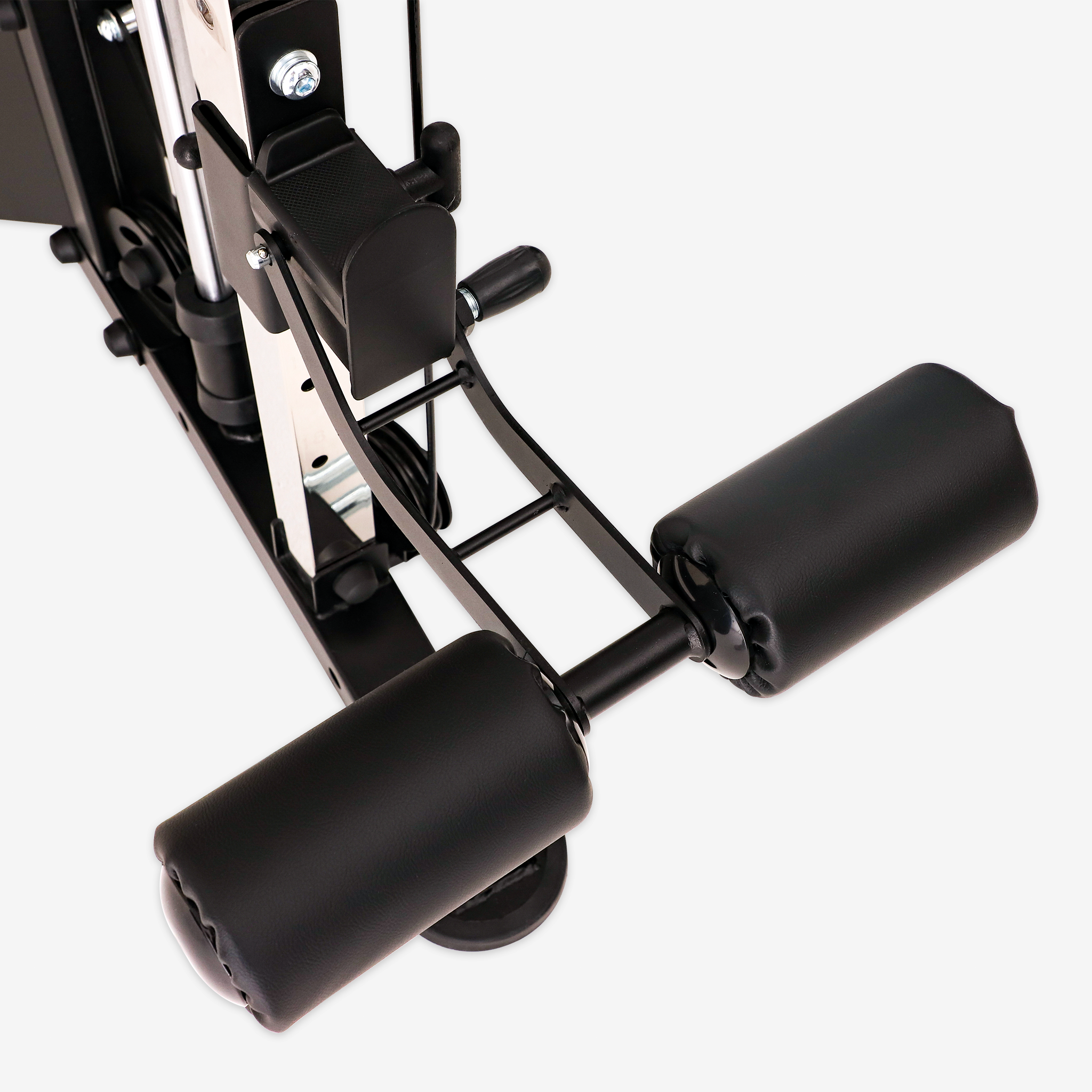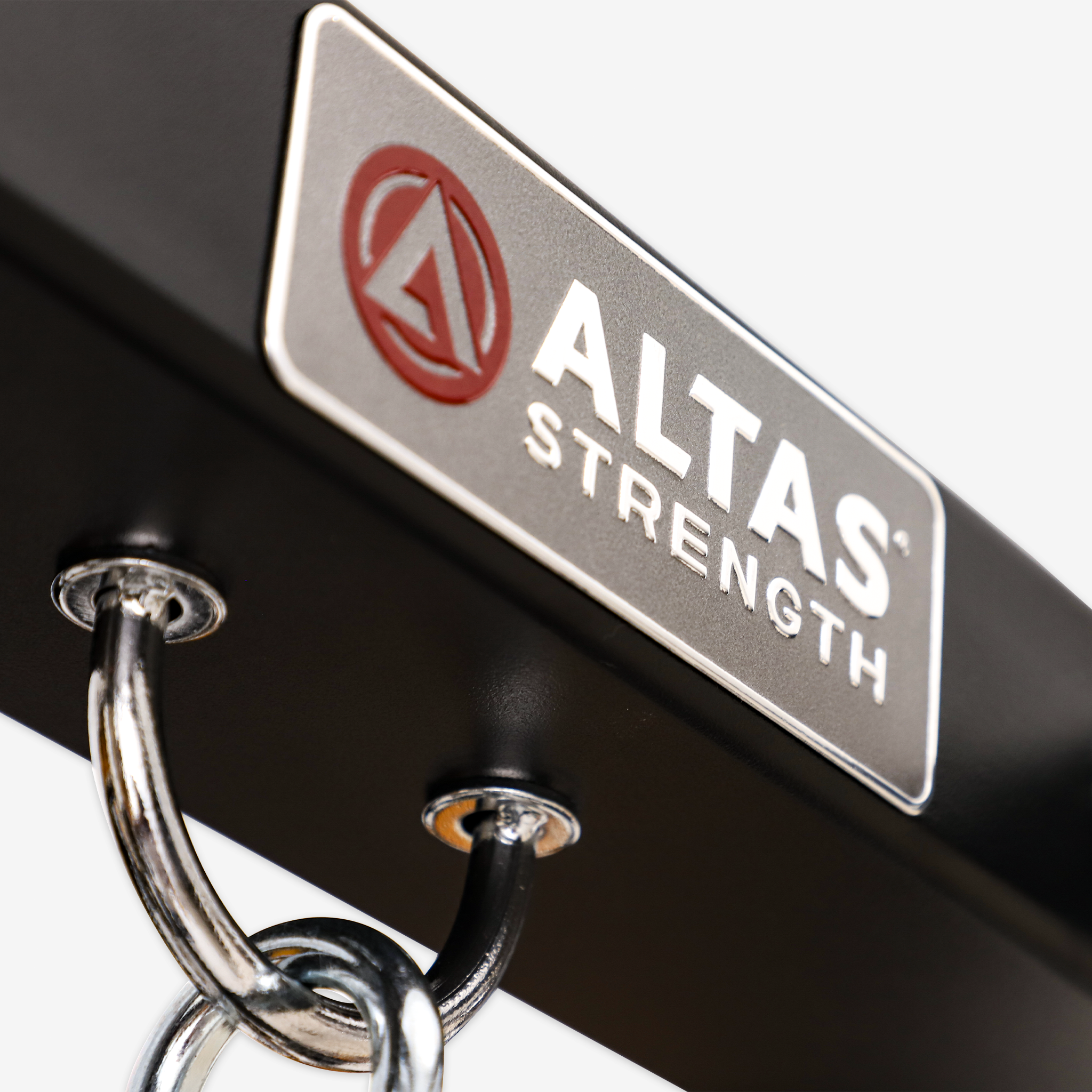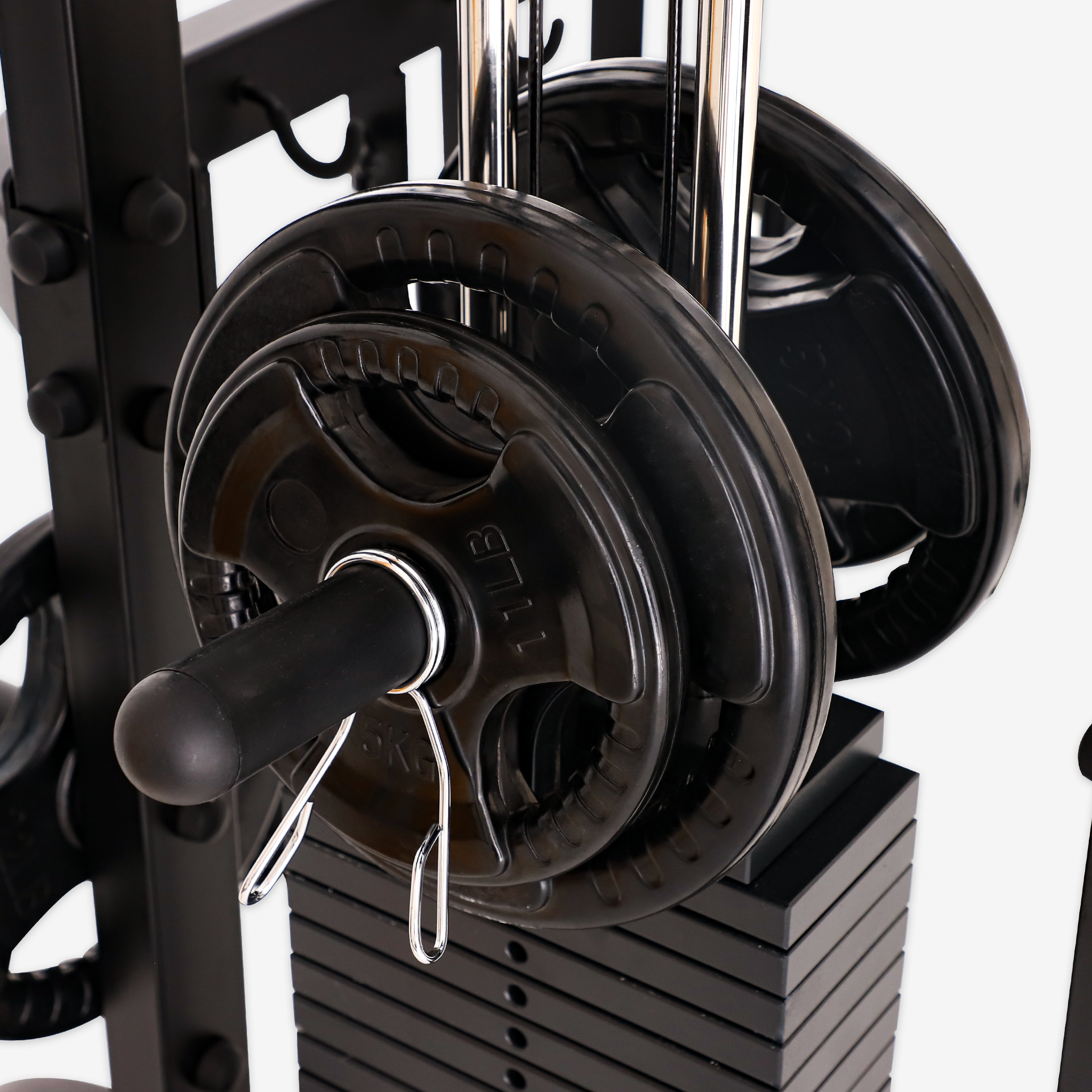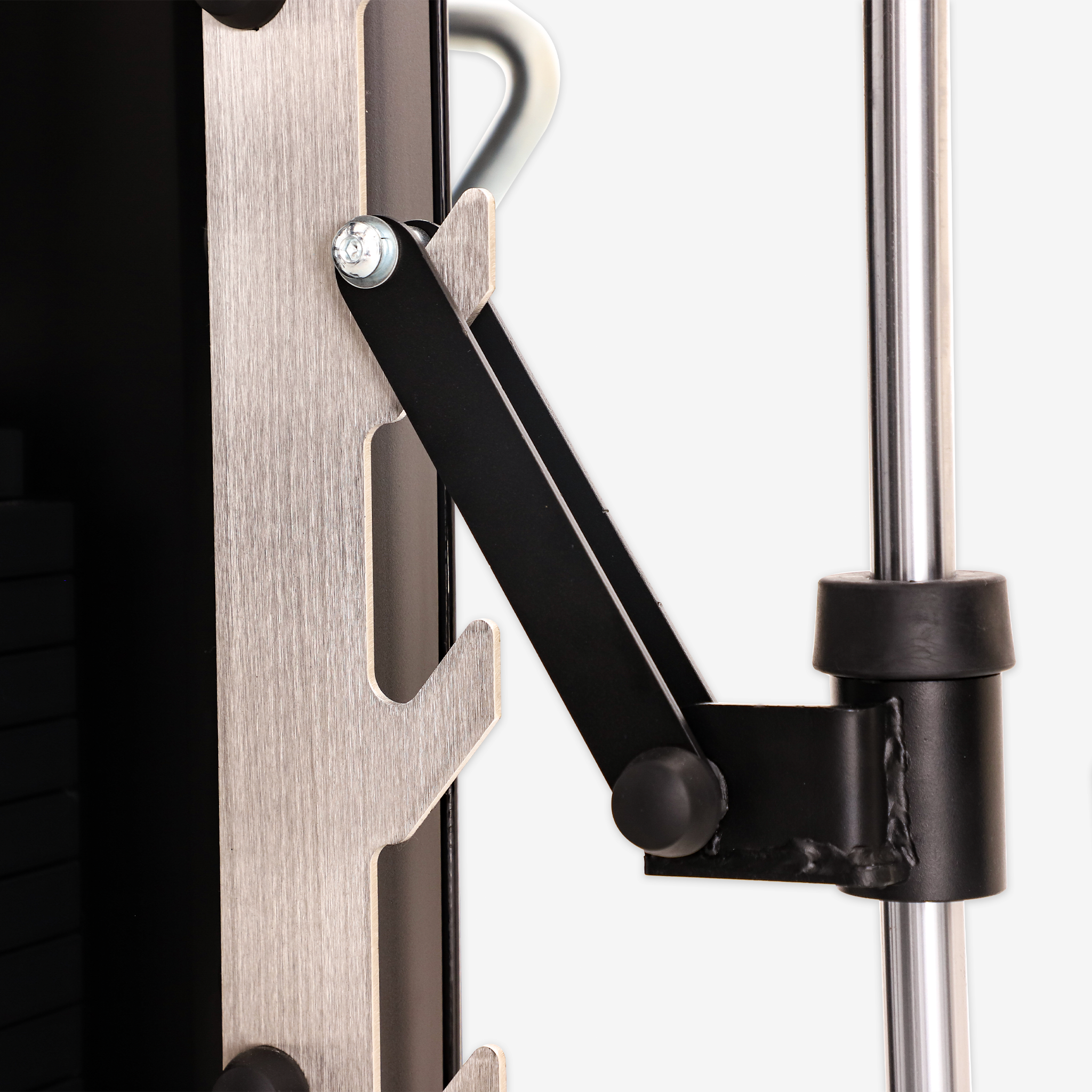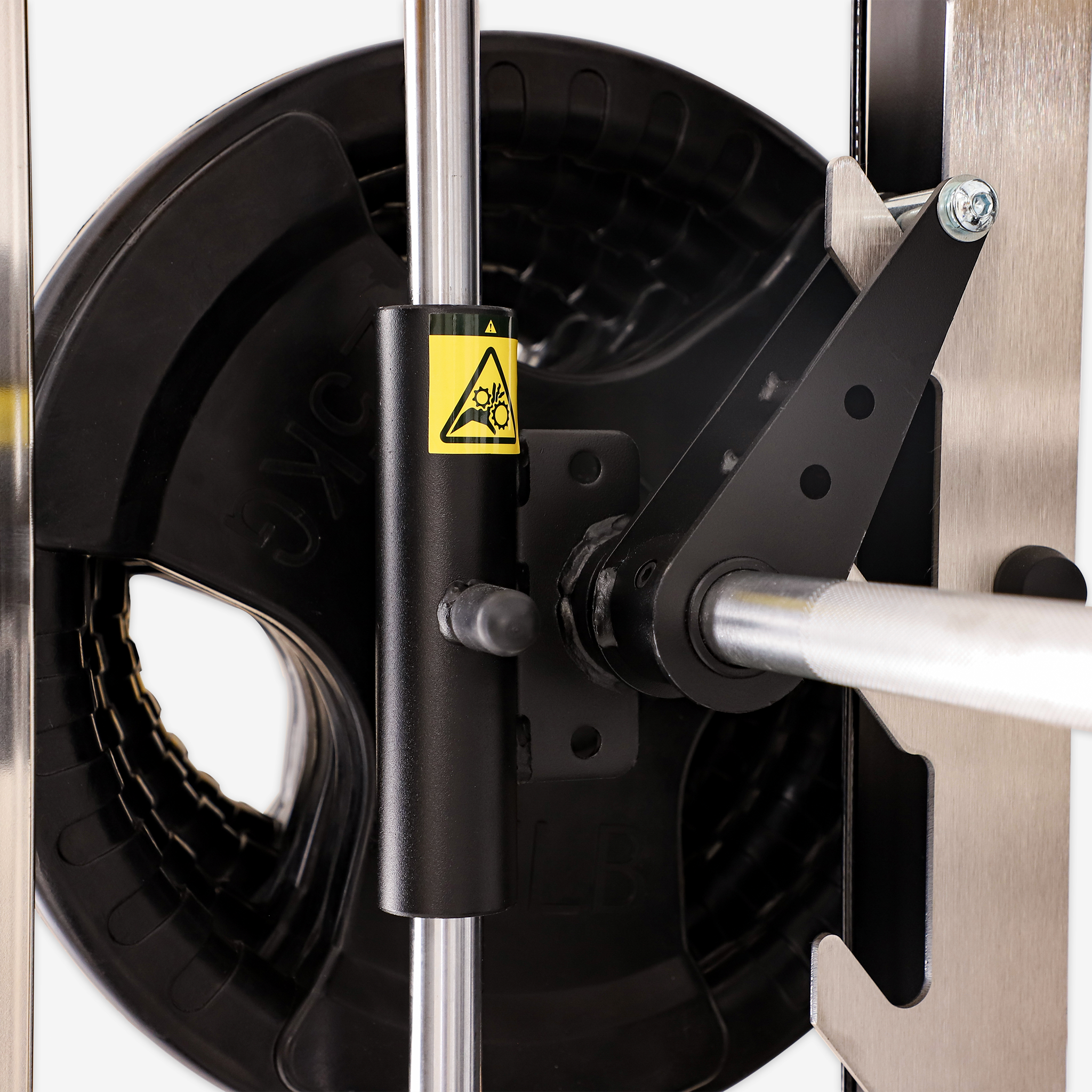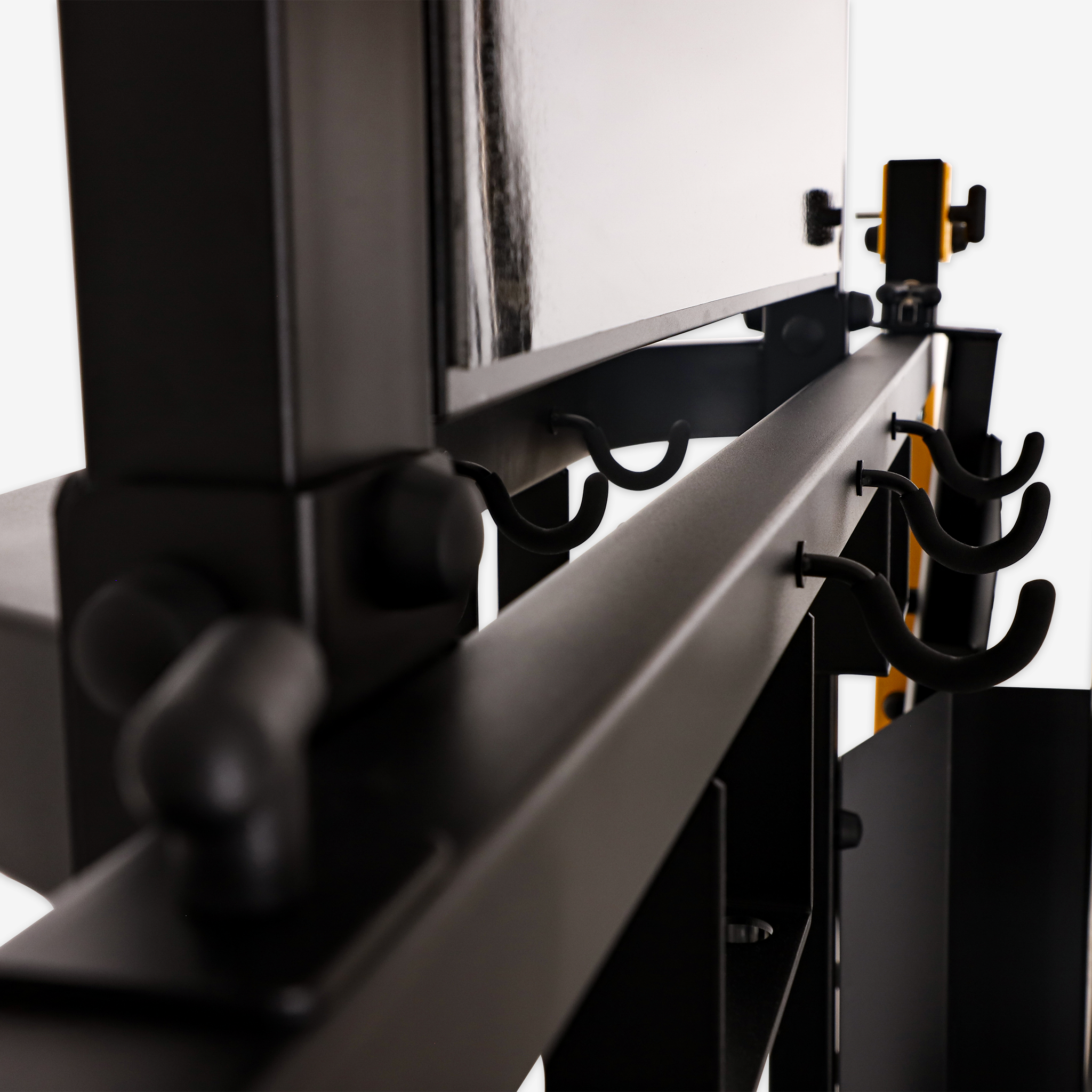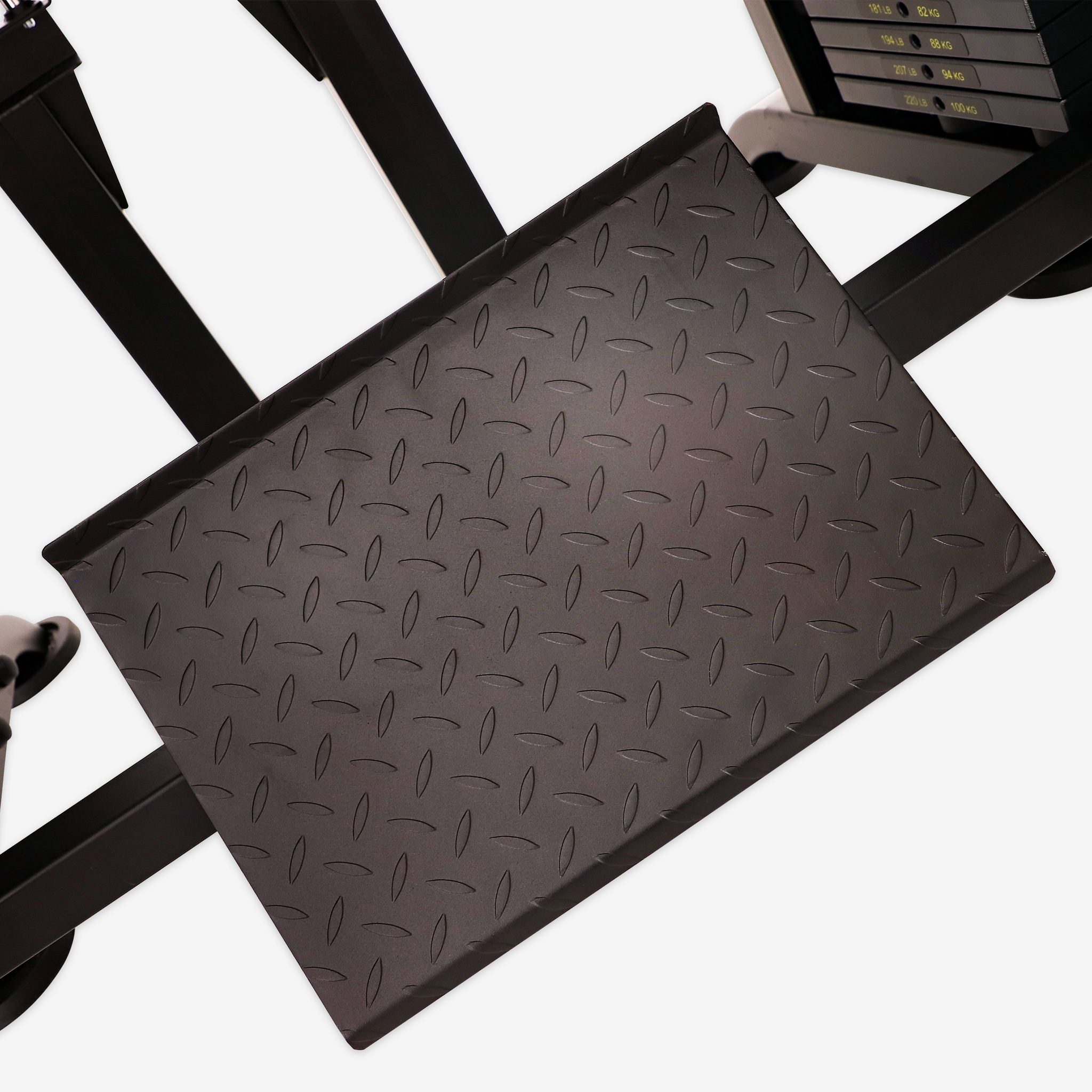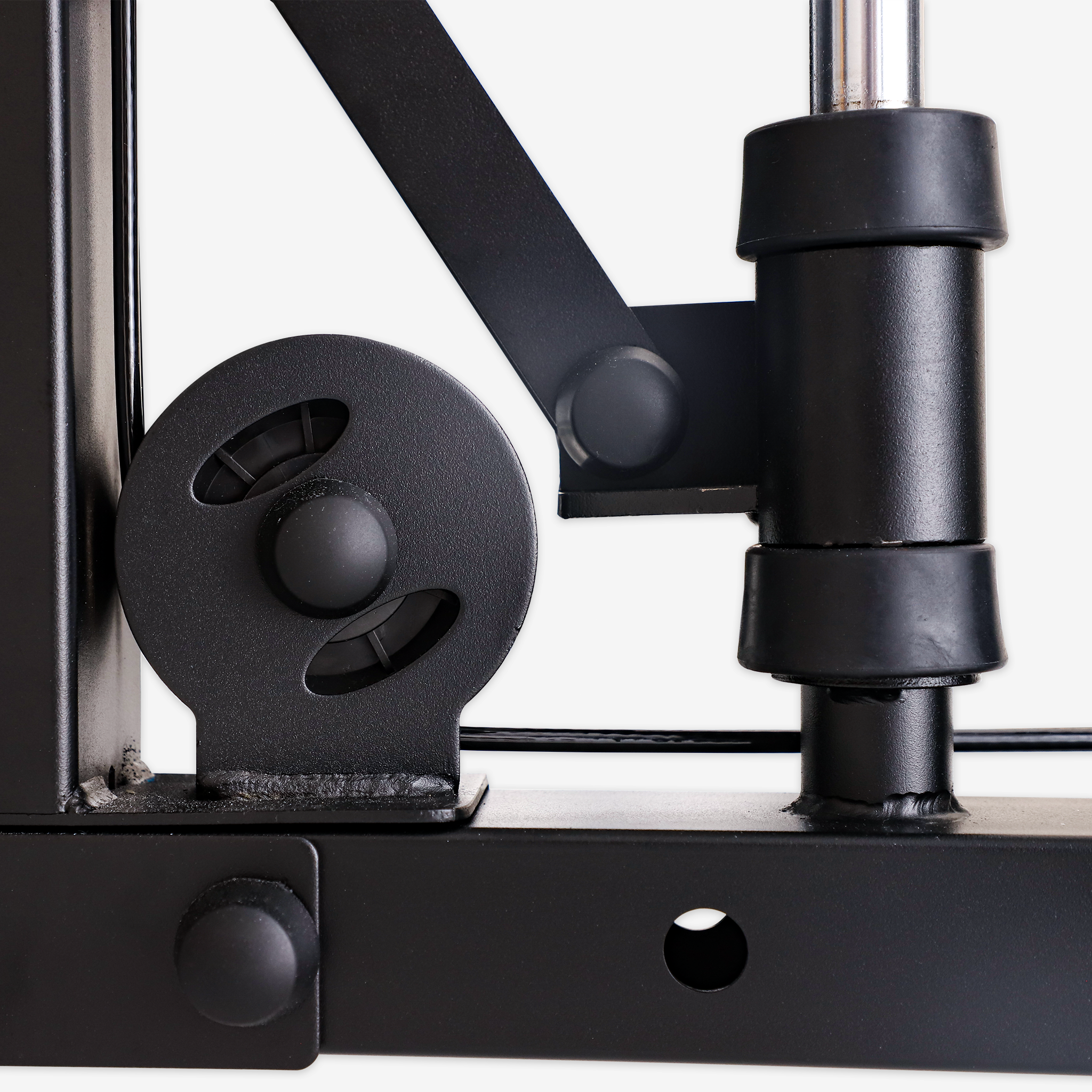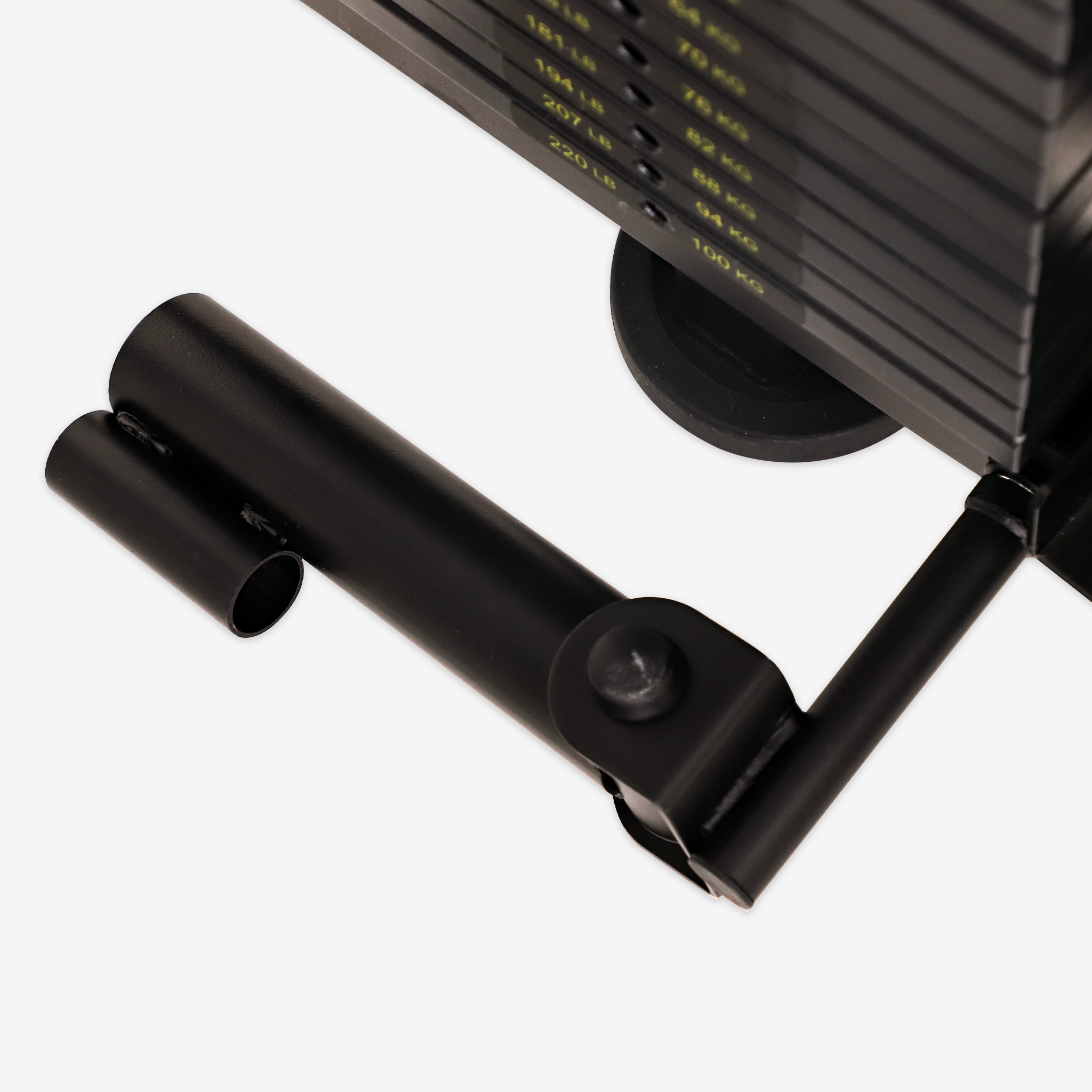The Smith Machine Bulgarian Split Squat is a classic exercise that combines the benefits of unilateral squats with the stability provided by the Smith machine. Not only does it effectively target lower body strength, but it also enhances core stability and overall balance. The fixed trajectory of the Smith machine allows practitioners to focus on muscle engagement and reduce form deviations, making it a favored compound exercise in strength training.
This article offers a detailed breakdown of the technical aspects, benefits, common mistakes, advanced variations, and training suggestions for mastering this exercise.
1. Technical Aspects of the Smith Machine Bulgarian Split Squat
Before beginning your workout, mastering the correct technique is essential for an efficient and safe exercise. Below are the steps and key points:
1.1 Preparation
- Adjusting the Smith Machine Barbell Height: Begin by setting the barbell to a height slightly above your shoulders. This ensures that you can comfortably unload and initiate the movement from the starting position.
- Setting up a Stable Bench or Support: Place a stable bench behind the Smith machine to support your rear foot. The bench should be around knee height and stable enough to prevent shifting during the exercise.
- Choosing the Right Weight: Beginners should start with a light load to avoid imbalance or muscle strain. As strength increases, gradually add more weight.
1.2 Execution
- Foot Positioning: Stand beneath the barbell with your feet together. Position your front foot ahead of the bench while resting the top of your rear foot on the bench. There should be roughly two foot lengths between your front foot and the barbell.
- Grip the Barbell: Grasp the bar with hands slightly wider than shoulder-width apart, stabilizing it using your back muscles.
- Engage the Core: Maintain a tight core, keep your back straight, and relax your shoulders without slouching.
- Begin the Descent: Slowly bend your front knee while lowering your hips, bringing your thigh closer to parallel with the floor. Allow the rear leg to follow naturally without actively exerting force.
- Depth of Squat: Ideally, descend until your front thigh is parallel to or slightly below parallel with the floor, avoiding any discomfort in the knees or lower back.
- Return to Starting Position: Push through the quadriceps and glute muscles of the front leg to rise back to the starting position. Throughout the movement, ensure the front heel maintains stable contact with the ground.
2. Primary Muscles Targeted by the Smith Machine Bulgarian Split Squat
The Smith Machine Bulgarian Split Squat is a compound movement that engages several major muscle groups:
2.1 Quadriceps
Located at the front of the thigh, the quadriceps are the primary drivers during the knee's flexion and extension, particularly when rising from the squat position.
2.2 Gluteus Maximus
The gluteus maximus plays a crucial role, especially during deeper squats. It contributes to shaping and strengthening the glutes while enhancing lower body power.
2.3 Hamstrings and Calves
The hamstrings and calves of the rear leg primarily serve a stabilizing function during the exercise. Though not the main contributors, they assist in maintaining balance and supporting the overall movement.
2.4 Core Muscles
Due to the unilateral nature of the exercise, core muscles are activated to maintain balance and control. The abdominals, obliques, and lower back work together to stabilize the torso, especially during the transition from the squat to the upright position.
3. Benefits of the Smith Machine Bulgarian Split Squat
The distinctive design and motion of this exercise offer numerous advantages:
3.1 Enhanced Unilateral Leg Strength
Unilateral exercises allow for a more balanced development of leg strength, helping to address any imbalances that might arise from daily habits or improper training.
3.2 Improved Core Stability and Balance
With the body relying on single-leg support, the core and smaller stabilizing muscles are continuously engaged, leading to better posture and overall stability—a particularly valuable benefit for athletes or those seeking to enhance performance.
3.3 Knee Joint Protection
Compared to free-weight squats, the fixed path of the Smith machine can reduce strain on the knees by preventing the knee from moving past the toes, thus protecting the joint.
3.4 Flexible Intensity Adjustments
The fixed bar path of the Smith machine allows for easier adjustments in weight, making it suitable for beginners who are gradually increasing their load, as well as advanced lifters seeking a challenge by increasing weight or depth.
4. Common Mistakes and How to Avoid Them
To maximize the benefits and minimize the risk of injury, it's important to avoid these common errors:
4.1 Knee Overextending Past the Toes
- Mistake: Pushing the knee too far forward, causing it to surpass the toes and placing excessive strain on the joint.
- Solution: Ensure that the knee remains directly above or slightly behind the toes, and keep the weight focused on the heel of the front foot.
4.2 Leaning the Upper Body Forward
- Mistake: Leaning too far forward during the squat shifts the load to the lower back, increasing the risk of injury.
- Solution: Keep your back straight, chest lifted, and core engaged to prevent excessive bending of the spine.
4.3 Using Excessive Weight
- Mistake: Lifting too much weight can cause a loss of control and improper form.
- Solution: Start with lighter weights and gradually increase them while maintaining correct technique.
5. Advanced Variations and Training Tips
As your strength and technique improve, you can experiment with variations to further challenge your body:
5.1 Dumbbell Bulgarian Split Squat
Instead of using the Smith machine, try holding dumbbells in each hand. This variation allows greater freedom in adjusting the load and adds an extra element of balance.
5.2 Resistance Band for Added Stability
Place a resistance band between your front knee and ankle to challenge stability and activate more lower body muscles.
5.3 Incorporating Interval Training
Combine the Smith Machine Bulgarian Split Squat with other strength or cardio exercises for high-intensity interval training (HIIT) to enhance cardiovascular endurance and fat-burning effects.
6. Training Frequency and Program Structure
For beginners, incorporating 2-3 lower body sessions per week with 3-4 sets of 10-12 repetitions is recommended. As you progress, increase the weight or volume while ensuring sufficient recovery between sessions to prevent overtraining.
Conclusion
The Smith Machine Bulgarian Split Squat is an excellent choice for building lower body strength and improving core stability, suitable for both beginners and seasoned fitness enthusiasts. By mastering the correct technique and progressively increasing the load, this exercise will help you sculpt your legs and glutes while enhancing overall balance and coordination. Whether you're training for fitness or performance, including the Smith Machine Bulgarian Split Squat in your routine will yield impressive results.




